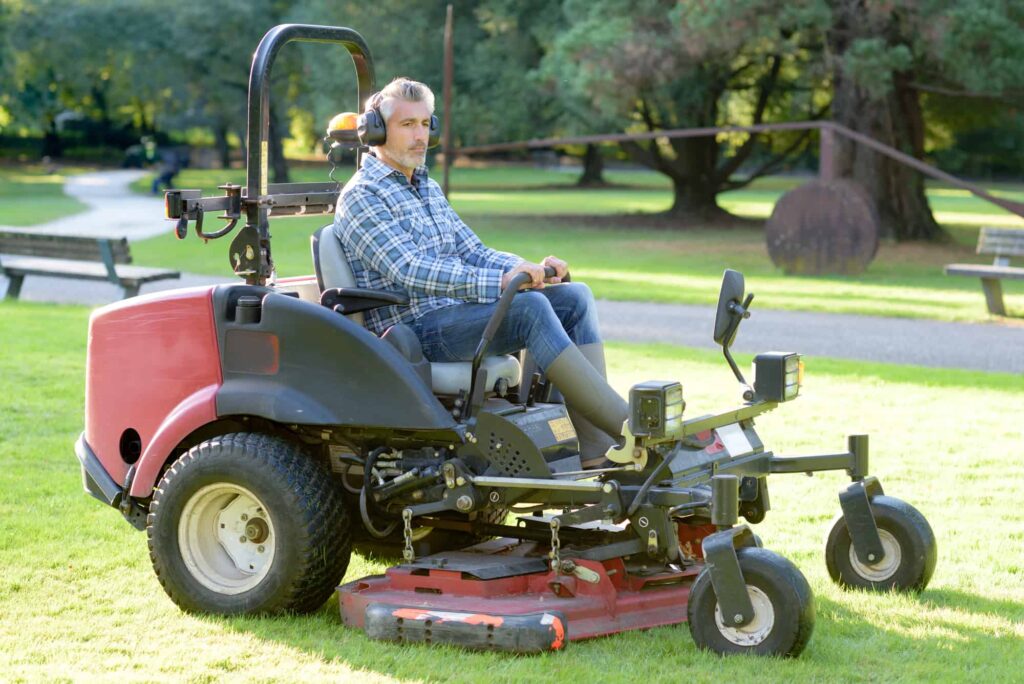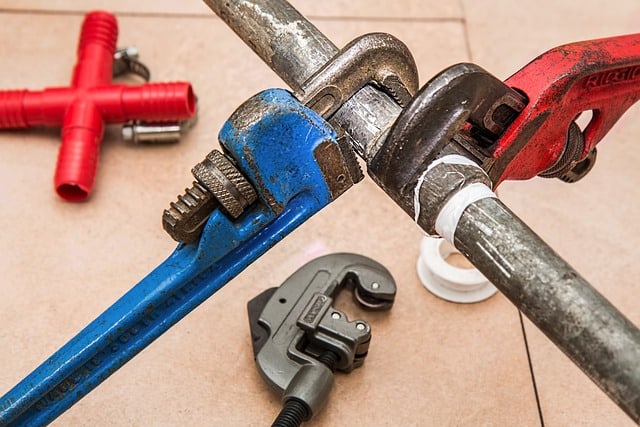How Does a Zero Turn Mower Work: Unlocking the Secrets
Are you tired of spending hours mowing your lawn and still not getting the desired results? A zero-turn mower might be an ideal choice. These machines are made to cut and mow accurately and quickly, making them popular with homeowners and landscapers. But exactly How Does a Zero Turn Mower Work? We will deeply dive into everything related to zero turn mowers – from their steering mechanism to their benefits and drawbacks.
What is a Zero Turn Mower?

A zero turn mower is designed to have a zero-degree turning radius. it can pivot in place without any forward or backward movement. With this feature, it becomes more convenient to mow around various obstacles. Like the lawn, trees, flower beds, or other landscaping elements.
Unlike traditional lawn mowers with a steering wheel or a front-wheel steering mechanism. Zero turn mowers are controlled using two levers or joystick-like handles. These controls independently operate the rear wheels. enabling each wheel to turn in opposite directions. By manipulating the levers or handles. the operator can control the speed and direction of each wheel, allowing for precise and efficient turns.
How Does a Zero Turn Mower Work
A zero turn mower operates on a unique steering and propulsion system that allows precise maneuverability. Here’s How Does a Zero Turn Mower Work:
Dual hydrostatic transmissions:
Two hydrostatic transmissions for each rear wheel are built into zero-turn mowers. These transmissions are powered by hydraulic pumps. that get their energy from the mower’s engine. The hydrostatic system lets you control the speed and direction of each rear wheel.
Steering controls:
Instead of a traditional steering wheel. zero turn mowers use two control levers or joystick-like handles within the operator’s reach. These controls are connected to the hydrostatic transmissions and allow the operator to maneuver the mower. Pushing both levers forward propels the mower straight ahead. while pulling them back moves it in reverse. Moving only one lever at a time causes the mower to turn in the respective direction.
Zero turning radius:
The independent control of the rear wheels allows the mower to achieve a zero turning radius. The mower’s ability to rotate on its axis allows for effortless navigation and maneuverability around obstacles and narrow corners.
Cutting deck operation:
Zero turn mowers have a wide cutting deck underneath the machine’s front. The cutting deck houses many blades that rotate to cut the grass. The cutting deck height can usually be adjusted to achieve the desired grass height. Some models may have extra features. such as a mulching or bagging attachment, to customize the cutting and collection of grass clippings.
Safety features:
To ensure safe operation, zero turn mowers come equipped with various safety features. These can include seat sensors that shut off the blades when the operator leaves the seat. The rollover protection systems (ROPS) protect the operator in case of a rollover. and blade engagement systems that require specific actions to activate the cutting blades.
It’s worth noting that different zero turn mower models may have specific variations in their design and features. But, the of independent rear wheel control and zero turning radius remains consistent across most zero turn mowers.
Benefits of Using a Zero Turn Mower
Maneuverability & Enhanced productivity
Zero-turn mowers are designed for large yards, making them highly efficient for mowing time. They provide a smooth, straight path with precision, ensuring your lawn looks great even after trimming. With their steering mechanism consisting of levers instead of a steering whee. These riding lawnmowers allow for easy maneuverability and precise control. Along with traction and swiveling front wheels, they have a turning radius of zero inches. This feature makes zero-turn mowers ideal for large areas with obstacles, as they can avoid sharp turns and trim around landscaping features or trees.
Precision Cutting
Zero-turn mowers provide precision cutting abilities due to their advanced steering systems and turning radius. These mowers utilize hydraulic systems. That enables users to control each wheel precisely. Making it easy to maneuver around obstacles. You can make sharp turns and pivot in place, allowing for close trimming around trees, flower beds, and landscaping features without damage. Their wider cutting decks save significant mowing time as fewer passes are required to cover the same area.
Efficient and Time-Saving
With their unique steering system and zero-turn radius, zero turn mowers provide superior maneuverability when compared to traditional riding mowers. This enhanced maneuverability allows for efficient and time-saving mowing.
Improved cut quality:
The cutting quality produced by zero-turn mowers is specifically engineered to be better. The wide cutting decks ensure a large swath of grass is cut with each pass, resulting in a more even and professional-looking lawn. Some models also come with adjustable cutting heights. Its allowing you to customize the height of your grass based on your preferences.
Comfortable operation:
Padded seats, armrests, and vibration dampening systems are just examples of the ergonomic features that are standard on many zero turn mowers nowadays. These features contribute to a more comfortable mowing experience. and reducing operator fatigue and making long mowing sessions more enjoyable.
Drawbacks of Using a Zero Turn Mower
While there are several benefits to using a zero turn mower, there are also a few drawbacks to consider:
Learning curve:
Operating a zero turn mower requires some practice and skill. The steering controls, two levers or joystick-like handles. It can be sensitive and responsive, which may take time to get used to. Beginners may struggle to master the precise control needed for smooth and efficient mowing.
Terrain limitations:
Zero turn mowers are most effective on flat or gently sloping terrain. They may need help to navigate steep hills or uneven surfaces. which can limit their usability in certain landscapes. If your yard has significant slopes or obstacles, a different type of mower might be more suitable, such as a tractor or a walk-behind mower.
Reduced traction:
Zero turn mowers generally have rear-wheel drive and rely on the rear wheels for propulsion and steering. While this setup provides excellent maneuverability, it can lead to reduced traction on slippery or wet surfaces. Traction can be further compromised if the grass is damp or if the mower is operated on inclines.
Cost:
Zero turn mowers are typically more expensive than traditional lawn mowers. The advanced steering and maneuvering technology, wider cutting decks, and powerful engines contribute to their higher price tag. Also, because of the specialized components that are included in zero-turn mowers. The cost of maintenance and repairs might be much higher.
Safety Concerns
Operating a zero-turn mower safely and wearing protective gear like helmets and goggles. Also, following the manufacturer’s instructions are essential to avoid accidents or injuries. Always maintain control while maneuvering around obstacles or tight spaces, as sharp turns or sudden stops can lead to tipping over.
Fuel consumption:
Due to their larger engines and higher operating speeds, zero turn mowers tend to consume more fuel than other mowers. This can increase fuel costs over time, especially for those with larger properties or professional landscaping businesses.
Potential for turf damage:
Zero turn mowers can make quick and sharp turns, which can cause turf damage if not operated with care. Abrupt changes in direction or excessive spinning of the mower’s wheels can result in turf tearing or scuff marks, particularly on sensitive or delicate grass types.
How to Choose a Zero Turn Mower
Selecting the right zero-turn mower depends on various factors like acreage, terrain type, and desired features. For optimal mowing time, choose a machine with an appropriate cutting deck size; this can range from 42 inches for small lawns up to 72 inches for large yards. Look for durable designs in engines and transmissions capable of handling tough conditions. Ergonomic controls like lap bars or steering wheels along with versatile cuttings options will make mowing easier. Check out popular brands such as John Deere or Hustler Turf for diesel or propane-powered machines.
How Do Zero Turn Mowers Handle on Slopes?
When mowing on slopes with a zero turn mower, it’s important to consider the model and slope angle. Check the manufacturer’s recommendations for traction and safety features before purchasing. Slow down to reduce tipping risk, and consider using a mower with a roll bar for added protection.
Is a Zero Turn Mower Better Than a Lawn Tractor?
When deciding between a zero turn mower and a lawn tractor, consider factors such as speed, maneuverability, precision, affordability, and cutting deck width. Zero turn mowers are faster and more precise but come with a higher price tag, while lawn tractors are wider and more affordable.
Conclusion
I hope that we can have a thorough conversation on the functioning of How Does a Zero Turn Mower Work. Zero turn mowers are a great investment for those who want to get their lawn looking perfect in no time. They offer precision cutting and efficient mowing, saving time and energy. But, it is important to consider the potential safety concerns and limitations when using one on slopes. When considering purchasing a zero turn mower, do your research and choose one that fits your specific needs. an






